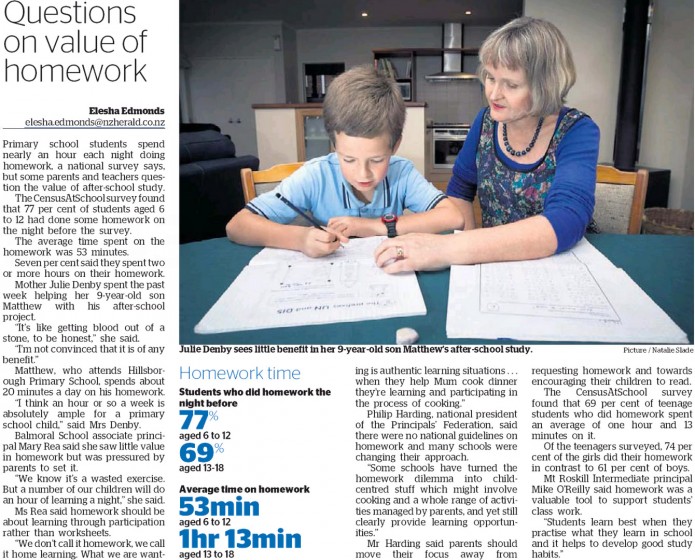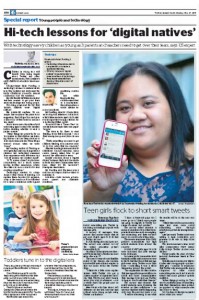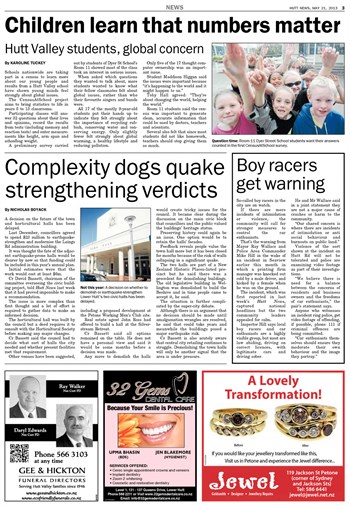Three-quarters of students aged 6 to 12 say they did homework the night before they completed a nationwide survey – and on average, that extra work took 53 minutes. A total of 69% of teenage students say they did homework, and that on average, they spent 1 hour 13 minutes doing it.
This insight has emerged from the educational project CensusAtSchool, which so far has involved more than 19,000 students from 600 schools answering questions about their lives. For the first time this year, CensusAtSchool asked students whether they had done homework the night before filling in the online survey, and how long they spent on it.
“The numbers are just a snapshot, but they are food for thought in the lively debate around homework,” says CensusAtSchool co-director Rachel Cunliffe. “It seems that everyone has an opinion on how much homework children should do – and more recently, we’ve seen some education experts suggesting that children are, perhaps, better off playing after school rather than studying.”
The survey also found that 74% of teen girls said they did homework the night before – but just 61% of teen boys. Some students said they did two or more hours of homework – 7% of all 6 to 12-year-olds and 15% of all 13 to 18-year-olds.
WHO’S DOING HOMEWORK?
Students who did homework the night before CensusAtSchool:
All, aged 6-12: 77%
All, aged 13-18: 69%
Average time on homework the night before CensusAtSchool:
All, aged 6-12: 53 mins
All aged 13-18: 1 hour 13 mins
Boys aged 6 to 12: 53 mins
Girls aged 6 to 12: 54 mins
Boys aged 13 to 18: 1 hour 5 mins
Girls aged 13 to 18: 1 hour 17 mins
Source: CensusAtSchool
Students were also asked to name their favourite singers or bands. Anyone with a daughter will not be at all surprised to hear that the girls’ favourite group is English-Irish boy band One Direction, formed out of the 2010 series of singing competition The X Factor in the United Kingdom. Next on the list is Taylor Swift, followed by Ed Sheeran, Justin Bieber and Beyonce. For boys, the top of the list is American singer-songwriter Bruno Mars, followed by Eminem, Macklemore, Imagine Dragons, and Coldplay.
CensusAtSchool is a biennial online project that brings statistics to life in the classroom. Supervised by teachers, students aged between 10 and 18 (Year 5 to Year 13) answer 32 questions about their lives, many of them involving practical activities such as weighing and measuring, then become ‘data detectives’ as they analyse the results in class. This year, more than 1408 teachers have run CAS in their classrooms.
CensusAtSchool, now in its sixth edition, is a collaborative project involving teachers, the University of Auckland’s Department of Statistics, Statistics New Zealand and the Ministry of Education. It is part of an international effort to boost statistical capability among young people, and is carried out in Australia, the United Kingdom, Canada, the US, Japan and South Africa. The countries share some questions so comparisons can be made, but the majority reflect New Zealand students’ interests.
CensusAtSchool co-director Professor Chris Wild, of the Department of Statistics at the University of Auckland, adds, “The survey produces data about kids, from kids, for kids, to enrich their learning about how to collect, explore and analyse data. But the project goes much further, by providing support to teachers.”




